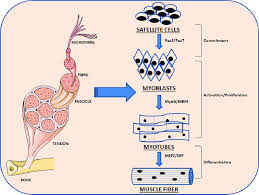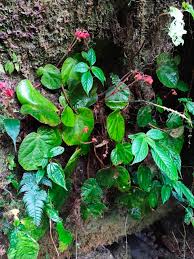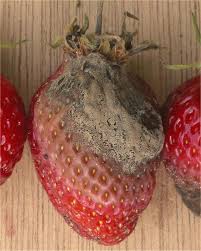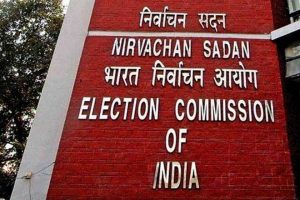Today’s Current Affairs: 30th June 2025 for UPSC IAS exams, State PSC exams, SSC CGL, State SSC, RRB, Railways, Banking Exam & IBPS, etc
Table of Contents
Central Sector Scheme of Scholarship for College and University Students:

The CBSE recently announced the Central Sector Scheme of Scholarship for College and University Students (CSSS) for the academic year 2025-26, inviting applications from eligible students via the National Scholarship Portal, scholarships.gov.in.
- “Pradhan Mantri Uchchatar Shiksha Protsahan (PM-USP) Central Sector Scheme of Scholarship for College and University Students” is a scholarship scheme by the Department of Higher Education, Ministry of Education.
- The primary objective of the scheme is to provide financial assistance to meritorious students from poor families to meet a part of their day-to-day expenses while pursuing higher studies.
- The scholarships are awarded based on the results of the Higher Secondary/Class 12th Board Examination.
- A maximum of 82,000 fresh scholarships (41,000 for boys and 41,000 for girls) per annum are provided for pursuing Graduate/ Postgraduate degrees in colleges and universities and for professional courses, such as medical, engineering, etc.
- The total number of scholarships is divided amongst the State Education Boards based on the State’s population in the age group of 18-25 years, after segregating the share of CBSE and ICSE on the basis of the number of students passing out from various Boards in the country.
- The number of scholarships allotted to a State Education Board is distributed amongst pass-outs of the Science, Commerce, and Humanities streams in the ratio of 3:2:1. In case of a shortfall in the number of applications, the scholarship slots could be interchanged.
- ₹12,000/- per annum at the graduation level for the first three years of college and university courses.
- ₹20,000 per annum at the post-graduation level.
- ₹20,000/- per annum in the 4th and 5th years to the students pursuing professional courses, in cases where the duration of the course is five (5) years/integrated courses.
- Students pursuing technical courses such as B.Tech, B.Engg. will get a scholarship up to graduation level only i.e. ₹12,000 p.a. for 1st, 2nd, and 3rd years and ₹20,000 in the 4th year.
Myogenesis : Study

Group Captain Shubhanshu Shukla recently launched groundbreaking Myogenesis experiments on the ISS, marking India’s advancements in space research.
- Myogenesis is the process by which muscle fibers are formed.
- It is a complex and highly regulated process that is crucial for the development and maintenance of skeletal muscle tissue.
- The significance of myogenesis lies in its role in forming the musculature of the body, enabling movement, maintaining posture, and regulating metabolism.
- Myogenesis involves the differentiation of precursor cells, known as myoblasts, into multinucleated muscle fibers.
- This process is not only essential during embryonic development but also plays a critical role in muscle repair and regeneration throughout life.
- The study of myogenesis is important for understanding muscle development and related disorders, as well as for developing therapeutic strategies for muscle diseases.
- The myogenic process can be broadly divided into several stages: myoblast proliferation, differentiation, and fusion into multinucleated myotubes, followed by maturation into muscle fibers.
- Each stage is tightly regulated by a complex interplay of transcription factors, signaling pathways, and cellular processes.
- Key transcription factors such as MyoD and Myf5 play a crucial role in regulating myogenesis.
- These myogenic regulatory factors (MRFs) are essential for the specification of myoblasts and their differentiation into muscle fibers.
- MyoD is a master regulator that drives myoblast differentiation by activating the expression of muscle-specific genes.
- Myf5 is involved in the early stages of myogenesis, regulating myoblast proliferation and specification.
- Cellular processes such as cell proliferation and differentiation are tightly regulated during myogenesis.
- Myoblast proliferation is a critical step that precedes differentiation. It ensures an adequate number of myoblasts for muscle formation.
- Myoblast differentiation involves a series of molecular changes that enable myoblasts to fuse and form multinucleated myotubes.
Begonia nyishiorum:

New flowering plant species discovered in Arunachal’s East Kameng; named after state’s largest tribe
- Begonia nyishiorum is a new species of flowering plant.
- It is endemic to the East Kameng district of Arunachal Pradesh.
- It grows in moist, shaded mountain slopes between 1,500 and 3,000 metres above sea level.
- It is instantly recognisable by the dense crimson, fringed scales that sheath its light green petioles-an indumentum previously unseen in any Asian begonia.
- Currently known only from two forest sites in East Kameng, the species’ petiole “fringe” sets it apart from over 2,150 accepted begonias worldwide.
- The epithet nyishiorum honours the Nyishi community whose traditional stewardship protects these high-elevation forests.
- The species is assessed as Data Deficient according to the IUCN Red List criteria.
Botrytis Fungi:

Researchers from Sichuan University and the University of British Columbia have found that botrytis fungi (Botrytis cinerea) cannot be cloned.
- Botrytis Fung is a widespread necrotrophic fungal pathogen.
- Botrytis cinerea needs to obtain nutrients before it can penetrate a plant.
- Dead or damaged plant tissue, such as old flower petals, can provide nutrients that the fungus needs.
- Owing to this feeding source, the infection gains strength and spreads to healthy plant tissues. A brownish rot develops in newly infected tissues, which is how Botrytis cinerea deteriorates plants.
- These fungi usually attack blossoms and fruit, but they can also cause rot and blight on buds, stems, leaves, roots, bulbs, and tubers.
- The fungus typically targets fragile, wounded, aging, or dead plant parts.
- It infects grapes, penetrates the skin, causes the berries to lose water by evaporation and shrivel up, and thus concentrates the sugars and flavours in them.
- It was also found recently that this fungi exhibits an unusual idiosyncrasy.
- In these fungi, no single nucleus contains a complete set of chromosomes. Instead, the chromosome set is distributed across two or more nuclei, and any one nucleus contains only a subset.
- It requires warm temperatures, high humidity, and prolonged wetness which facilitate easy fungus inoculation.
- Additionally, it can release organic acids, such as oxalic acid, which acidify the surrounding environment.
GoIStats App:

The National Sample Survey Office (NSO), under the Ministry of Statistics and Programme Implementation (MoSPI), launched the GoIStats mobile application on Statistics Day 2025.
- The GoIStats mobile application represents NSO’s vision of creating an all-encompassing data ecosystem where every stakeholder can seamlessly access official data on the go.
- It has an interactive “Key Trends” dashboard showcasing important socio-economic indicators with dynamic visualizations of critical metrics including GDP, inflation, employment data.
- Users gain direct access to NSO’s database through the “Products” section, featuring one-click CSV downloads.
- It also has advanced filtering and search capabilities with comprehensive metadata, and mobile-optimized data tables are also available for seamless viewing.
- It contains visual data storytelling capabilities including a curated infographics section that transforms complex statistics into digestible insights, interactive charts and graphs with contextual explanations, social sharing features to promote data literacy across communities
- It provides users with the access to NSO reports and publications with instant download functionality. Regular updates aligned with NSO’s publication calendar are provided to the user with app notification facility.
Football for Schools (F4S) Programme:

The Union Minister for Education presided over the distribution of FIFA footballs as part of the Football for Schools (F4S) programme at PM SHRI Kendriya Vidyalaya, Fort William, Kolkata, West Bengal.
- It is an ambitious programme run by Fédération Internationale de Football Association (FIFA) in collaboration with UNESCO,
- It aims to contribute to the education, development and empowerment of around 700 million
- It seeks to make football more accessible to both boys and girls around the world by incorporating football activities into the education system, in partnership with relevant authorities and stakeholders.
- It has been designed to promote targeted life skills and competencies through football and contribute to the United Nations’ Sustainable Development Goals (SDGs) and other priorities.
- The F4S Programme is aligned with global sport, education and health policies, including UNESCO’s Kazan Action Plan, the Education 2030: Incheon Declaration and Framework of Action, and the World Health Organization (WHO) Global Action Plan on Physical Activity (GAPPA).
- Objectives of the Football for Schools Programme:
- Empower learners (boys and girls) with valuable life skills and competencies
- Empower and provide coach-educators with the training to deliver sport and life-skills activities
- Build the capacity of stakeholders (schools, MAs and public authorities) to deliver training in life skills through football
- Strengthen the cooperation between governments, MAs and participating schools to enable partnerships, alliances and intersectoral collaboration
- It was launched in mid-2019 with pilot projects in Puerto Rico and Lebanon.
- In India, the programme is implemented by the Department of School Education and Literacy, Ministry of Education (DoSEL), with support from the
- All India Football Federation (AIFF) and the Sports Authority of India (SAI).
India Energy Stack:

The Ministry of Power has launched a task force to conceptualize the India Energy Stack (IES) — a Digital Public Infrastructure aimed at transforming India’s power sector through secure and interoperable digital systems.
- The India Energy Stack (IES) is a comprehensive digital public infrastructure (DPI) for the power sector, designed to ensure seamless, secure, and real-time coordination across generation, distribution, and consumption.
- Developed By: The initiative is spearheaded by the Ministry of Power, Government of India.
- Objective:
- Modernize the power sector with a unified digital foundation.
- Enable secure data sharing and real-time analytics.
- Boost consumer-centric services and grid efficiency.
- Support India’s Net Zero goals and economic ambitions.
Bihar Launches India’s First Mobile e-Voting System in Local Body Polls:

Bihar has become the first Indian state to implement mobile phone-based e-voting in local body elections, recording 70.2% participation via the app-based platform.
- A mobile-based electronic voting system allowing eligible voters to cast their votes remotely using a secure mobile application, E-SECBHR, during Bihar’s urban local body elections.
- Developed By the e-voting app and system were developed by the Centre for Development of Advanced Computing (C-DAC).
- Objective:
- Enable inclusive, accessible, and contactless voting.
- Improve voter turnout among the elderly, disabled, pregnant women, and those unable to travel to booths.
- Promote digital empowerment and electoral convenience.
- Voter downloads the E-SECBHR mobile app (currently Android only).
- Links mobile number as per the electoral roll.
- Upon verification via Voter ID, user gains access to vote through the app or official SEC website.
- Voting is permitted only on election day.
Biopesticide for Cardamom Thrips:
The ICAR-Indian Institute of Spices Research (ICAR-IISR), Kozhikode, has developed an eco-friendly biopesticide using the entomopathogenic fungus Lecanicillium psalliotae to effectively control cardamom thrips, a major pest affecting cardamom plantations. A granular biopesticide has been developed using Lecanicillium psalliotae, a naturally occurring entomopathogenic fungus isolated from cardamom thrips (Sciothrips cardamomi). It infects pests by penetrating their outer layer and feeding internally, effectively targeting larvae, pupae, and adults. It acts on contact and belongs to the same group as Beauveria bassiana and Metarhizium anisopliae, widely used in biological pest control. The biopesticide is mixed with farmyard manure (FYM) and applied 3–4 times to plant basins. It is cost-effective, reduces chemical pesticide dependence, and promotes root growth and soil nutrient availability.
Hong Kong Convention (HKC):
The Hong Kong International Convention (HKC) for the safe and environmentally sound recycling of ships came into force on June 26, 2025.The HKC is a global treaty developed under the International Maritime Organization (IMO) to regulate the safe and environmentally sound recycling of end-of-life ships.Objective is to Minimize health hazards to workers and environmental pollution from shipbreaking, Regulate hazardous materials like asbestos, heavy metals, and hydrocarbons, Promote safe waste handling and disposal during the ship dismantling process.
National Turmeric Board Inaugurated in Telangana:
The Union Home Minister inaugurated the headquarters of the National Turmeric Board in Nizamabad, Telangana, fulfilling a 40-year-old demand of turmeric farmers.A specialized statutory body set up by the Government of India to promote, regulate, and support the turmeric sector, from production to export. Headquarters: Nizamabad, Telangana – a key turmeric-producing region known as the “Turmeric Capital of India.” Ministry Involved: Operates under the Ministry of Commerce and Industry with coordination from Ministry of AYUSH, Agriculture, Pharmaceuticals, and Cooperation.
Ravi Agrawal’s Tenure as CBDT Chairman Extended Till June 2026:
The Government of India has extended the tenure of Ravi Agrawal as the Chairman of the Central Board of Direct Taxes (CBDT) till June 2026. This reappointment, approved by the Appointments Committee of the Cabinet (ACC), ensures leadership continuity in India’s apex direct tax policy-making body. Agrawal, a 1988-batch Indian Revenue Service (IRS) officer, had taken over the role in June 2024 and will now continue until June 30, 2026, or until further orders.
ESIC Relaunches SPREE & Introduces Amnesty Scheme 2025:
The Employees’ State Insurance Corporation (ESIC) has announced the relaunch of the SPREE scheme (Scheme to Promote Registration of Employers/Employees) from July 1 to December 31, 2025. Simultaneously, it has introduced the Amnesty Scheme – 2025, a one-time dispute resolution window running from October 1, 2025, to September 30, 2026. These initiatives aim to boost formal registrations, ensure better healthcare access, and foster voluntary compliance under the ESI Act.
Post Offices to Accept UPI Payments Nationwide by August 2025:
The Department of Posts has announced that all post offices in India will start accepting digital payments at their counters by August 2025. This transformation is enabled by a robust IT infrastructure upgrade known as IT 2.0, which introduces dynamic QR code-based payment integration with UPI (Unified Payments Interface), making postal transactions more secure and user-friendly.
RBI Tightens AePS Rules to Combat Fraud From January 2026:
The Reserve Bank of India (RBI) has issued a set of stringent new guidelines aimed at strengthening the operational framework of AePS touchpoints. Effective from January 1, 2026, the revised norms require stricter KYC, activity monitoring, and a ‘one operator-one acquiring bank’ rule for touchpoint operators such as Business Correspondents (BCs) and Bank Mitras.
India has been declared free of Trachoma:
In the ‘Mann Ki Baat’ programme, the Prime Minister of India said that India has been declared free of Trachoma It is a bacterial infection caused by the bacterium Chlamydia Trachomatis which affects the eyes. It is contagious; spreading through contact with the eyes, eyelids, nose or throat secretions of infected people, if left untreated it causes irreversible blindness. It is found in communities who are living in poor environmental conditions. The World Health Organisation (WHO) has termed Trachoma as a neglected tropical disease and its estimation suggests that 150 million people worldwide are affected by Trachoma.an eye disease.
India’s External Debt Rises 10% to $736.3 Billion: RBI Data:
India’s external debt surged by 10% to reach $736.3 billion at the end of March 2025, up from $668.8 billion a year earlier, according to the latest data released by the Reserve Bank of India (RBI). This increase has also pushed the external debt-to-GDP ratio up from 18.5% to 19.1%, reflecting the impact of global financial conditions, rising loan demands, and currency valuation effects.RBI has released data indicating a $67.5 billion increase in external debt year-on-year. Debt-to-GDP ratio has climbed to 19.1%, raising concerns over macroeconomic stability. The report breaks down debt by sector, currency denomination, and maturity structure.
Radhanath Swami Honoured by New York City for Spiritual and Community Leadership:
Radhanath Swami, a globally respected spiritual teacher and senior monk of the International Society for Krishna Consciousness (ISKCON), was conferred with a New York City honour at a special interfaith event hosted at the Bhakti Centre. The recognition, presented by NYC officials, celebrates his decades-long commitment to community service, interfaith dialogue, and spiritual leadership.The event, held under the theme “Foundation of Future,” highlights the growing appreciation for religious harmony and the vital role of spiritual leaders in promoting peaceful coexistence in multicultural societies.
India and South Africa signed two agreements on submarine cooperation:
India and South Africa signed two agreements on submarine cooperation during the 9th Joint Defence Committee (JDC) meeting held in Johannesburg.These are bilateral institutional mechanisms established under the 2000 MoU on Defence Cooperation to strengthen defence ties.Relations are rooted in a shared anti-colonial struggle, with formal defence cooperation beginning in 1996 through an MoU on Defence Equipment.
Co-chaired by the Defence Secretaries of both countries, the JDC serves as a high-level platform to review ongoing collaboration and identify new areas of mutual interest, including defence policy, military training, defence production, and research. It also oversees two sub-committees on defence cooperation and acquisitions, while facilitating structured dialogue, maritime security, and India’s strategic outreach to Africa.
Karnataka Bank MD and Executive Director resign:
Karnataka Bank’s Managing Director & CEO, Srikrishnan Hari Hara Sarma, and Executive Director Sekhar Rao have tendered their resignations, both citing personal reasons. The resignations, effective in July 2025, come amid the bank’s ongoing transformation drive. In response, the Board of Directors has formed a search committee to appoint suitable successors and ensure seamless leadership continuity.This development raises questions about the bank’s continuity plans, investor confidence, and transformation strategy. The bank has responded by appointing a Chief Operating Officer and assuring stakeholders of its continued financial soundness and operational stability.




